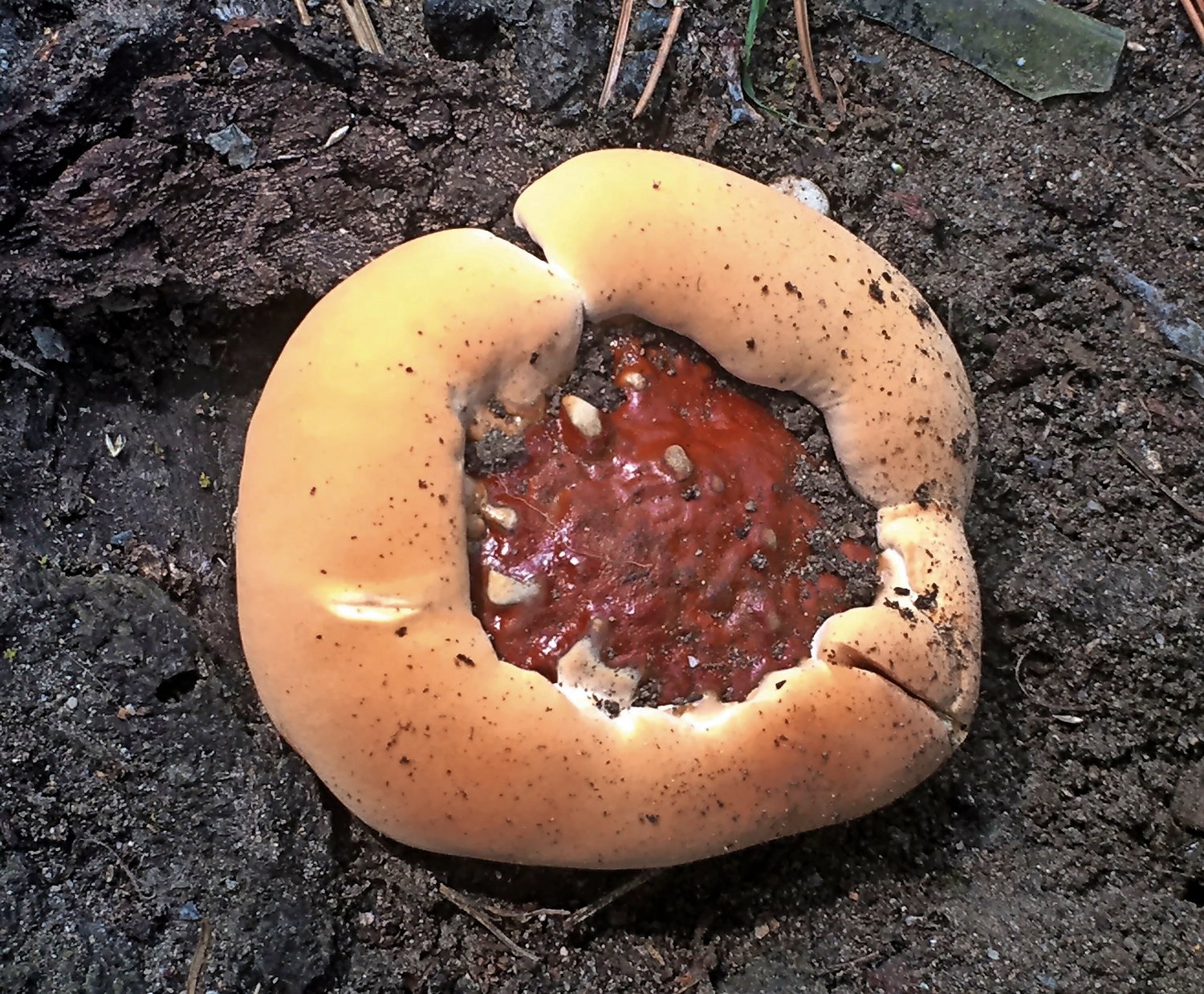A Ganoderma sessile is growing up right here in Riverdale
Now that I am taking part in the iNaturalist effort, documenting as much of New York City’s flora as possible, I stop more frequently on my walks to check out seeming minutiae.
During the summer, I was walking near the Whitehall and noticed a child’s pie thrown under a tree. It was round and had an orange-colored jelly-like filling in the center. I tried to move it further to the side and discovered my mistake.
This was not something created in the kitchen! When I gingerly touched it, I discovered that it was attached firmly to the soil.
Fortunately, there are people I can approach for fungus identification, which in this case, came back as Ganoderma sessile. The epithet means “without a stalk or stem,” which refers to the fact that this is a member of the shelf or bracket fungi. While my specimen was found around the roots of an oak tree, many large rounded brackets can be found growing on the trunks of other hardwoods, including maples, honey locusts and beech.
Ganoderma sessile is a polypore from the Ganodermataceae family. Polypores (literally “many pores”) have a multitude of tiny tubes lined up next to each other, perpendicular to the earth, through which the spores exit. Because the tubes are pressed against each other, they tend to assume a honeycomb structure when seen in cross-section.
These bracts, or conks, are the fruiting bodies of the fungus and tend to be woody and last for several years, growing a new pore layer every year. Boletes, which also have pores underneath the fruiting body’s cap, can be distinguished from polypores by having a soft cap rising from the ground, not a tree trunk, with a lifespan measured in days.
Confounding the polypore rule, the 3- to 16-inch woody bracts of G. sessile actually exist only for one year.
Some of these polypores have a shiny, lacquered upper surface, which explains the species name. Ganos is Greek for “brightness” or “sheen,” and derma means “skin,” providing the apt name, meaning “shiny skin.”
The taxonomy or classification of fungi is difficult. Ganoderma sessile, described by the American mycologist William Alphonso Murrill in 1902, has sometimes been lumped incorrectly with the European fungus Ganoderma lucidum. The G. lucidum, in turn, can be hard to distinguish from Ganoderma lingzhi (the reishi mushroom), used in Asian medicine.
Polypore fungi and their relatives, the corticioid fungi — also known as crust or patch fungi — are important agents in the decay of wood and forest products. Wood is composed mainly of three main materials: cellulose, hemicellulose and lignin.
Cellulose is a polysaccharide (material made up of multiple units of simple sugars —in this case, glucose units, that help make up the cell wall of plants that most animals — except ruminants — cannot digest. For humans, it is the material that adds bulk to the digestive system.
Hemicellulose is a structurally different polysaccharide, also found in the cell walls of plants. Lignin is the tough structural material found in wood.
Fungi are responsible for two types of wood decay. There is brown rot responsible for the decomposition of cellulose and hemicellulose.
Shrunken branches on the ground with cubical fractures of the wood is an example of brown rot. The residue of brown rot is the humus found in forest soils.
White rot fungi degrade cellulose, hemicellulose and lignin at equal rates and are the only organisms that can degrade lignin. The wood becomes lighter in color and stringy. Polypore species include both brown and white rotters.
In addition to rotting out woody material, the polypore fruiting body and its thread-like underground mycelia provide insects, mites and other invertebrates with nourishment. These organisms are, in turn, eaten by birds and other animals.
Birds are helped in another way by wood-rotting fungi. Many birds are cavity nesters instead of building twig-built nests on tree branches. They come in two categories: primary or secondary.
Primary cavity nesters — such as woodpeckers and chickadees — can create their own cavities when a tree is newly dead.
As rotting takes place, softening and enlarging the cavities in the interiors of dead trees (named “snags”), secondary nesters will move in.
Secondary nesters include various owls, the turkey vulture, and the American kestrel.
The health of the natural world can be difficult to quantify. Since the 1960s, bio-indicators which include “biological processes, species or communities have been used to assess the quality of the environment.” The various polypore species have proven useful to ecologists since they require different trees species at different points in their life cycle, and therefore they and the numerous species they support have been used as bio-indicators of the health of forests.
Have a thought or comment for Sura Jeselsohn? Email her at greenscenesura@gmail.com.






